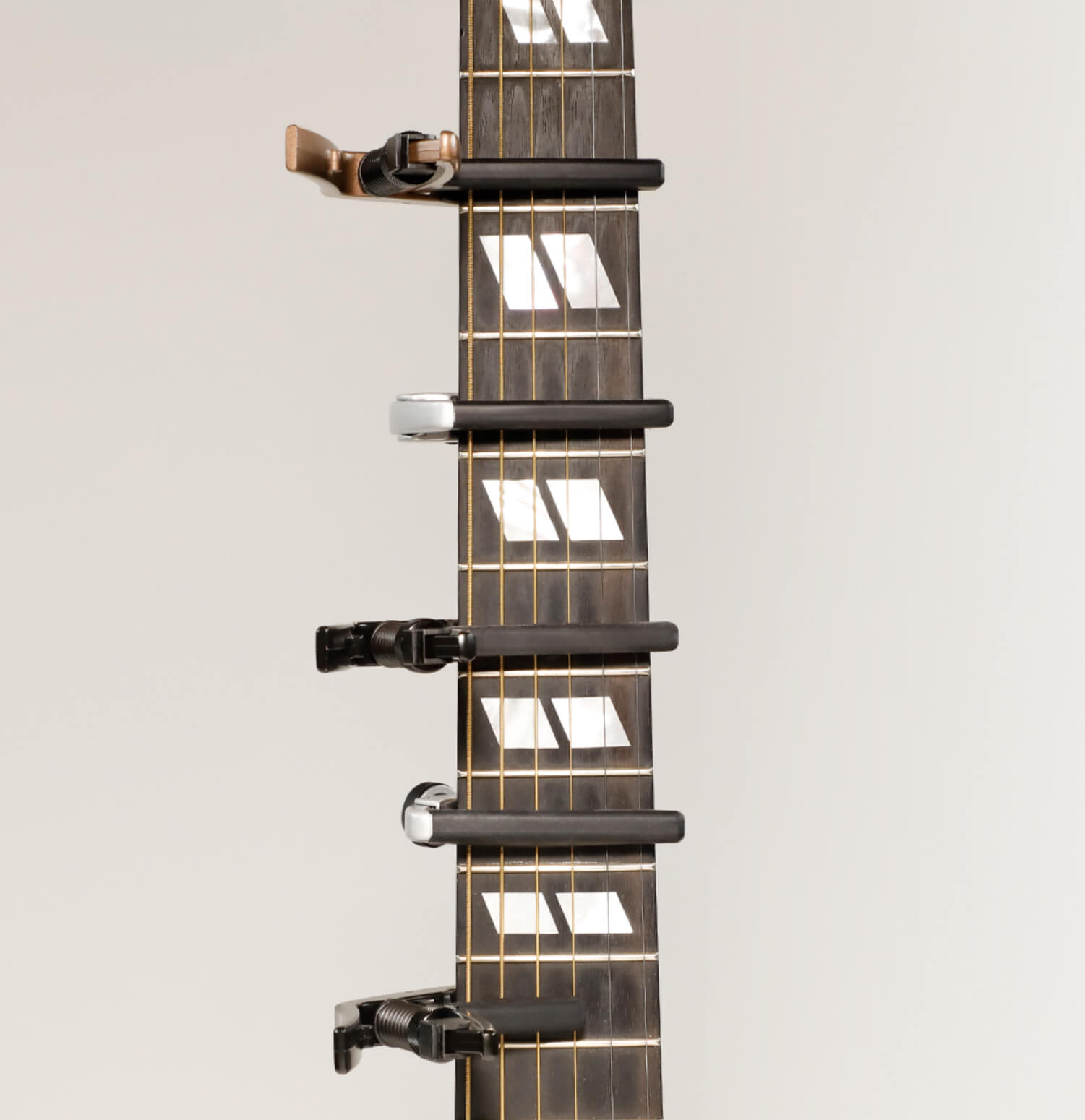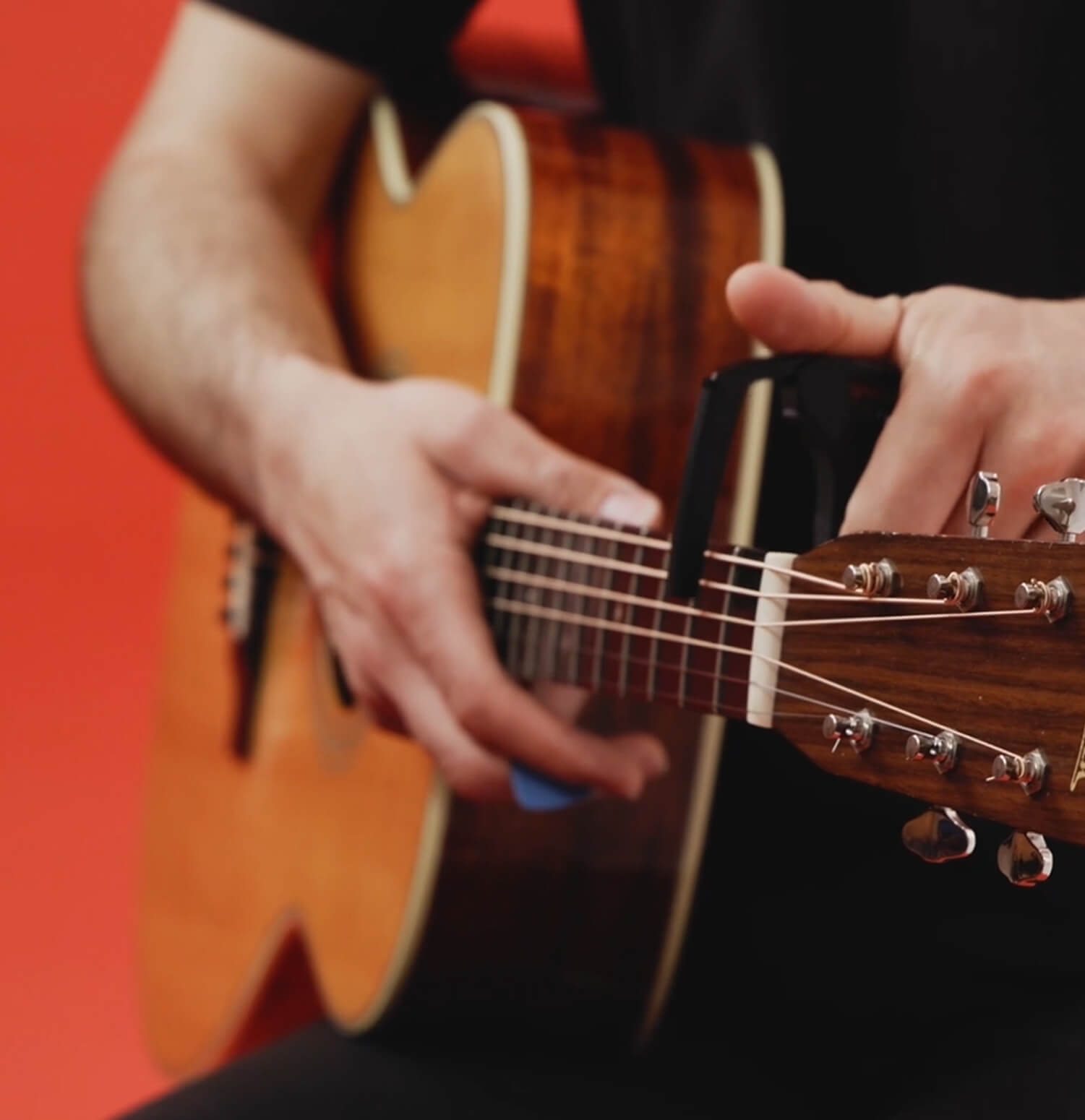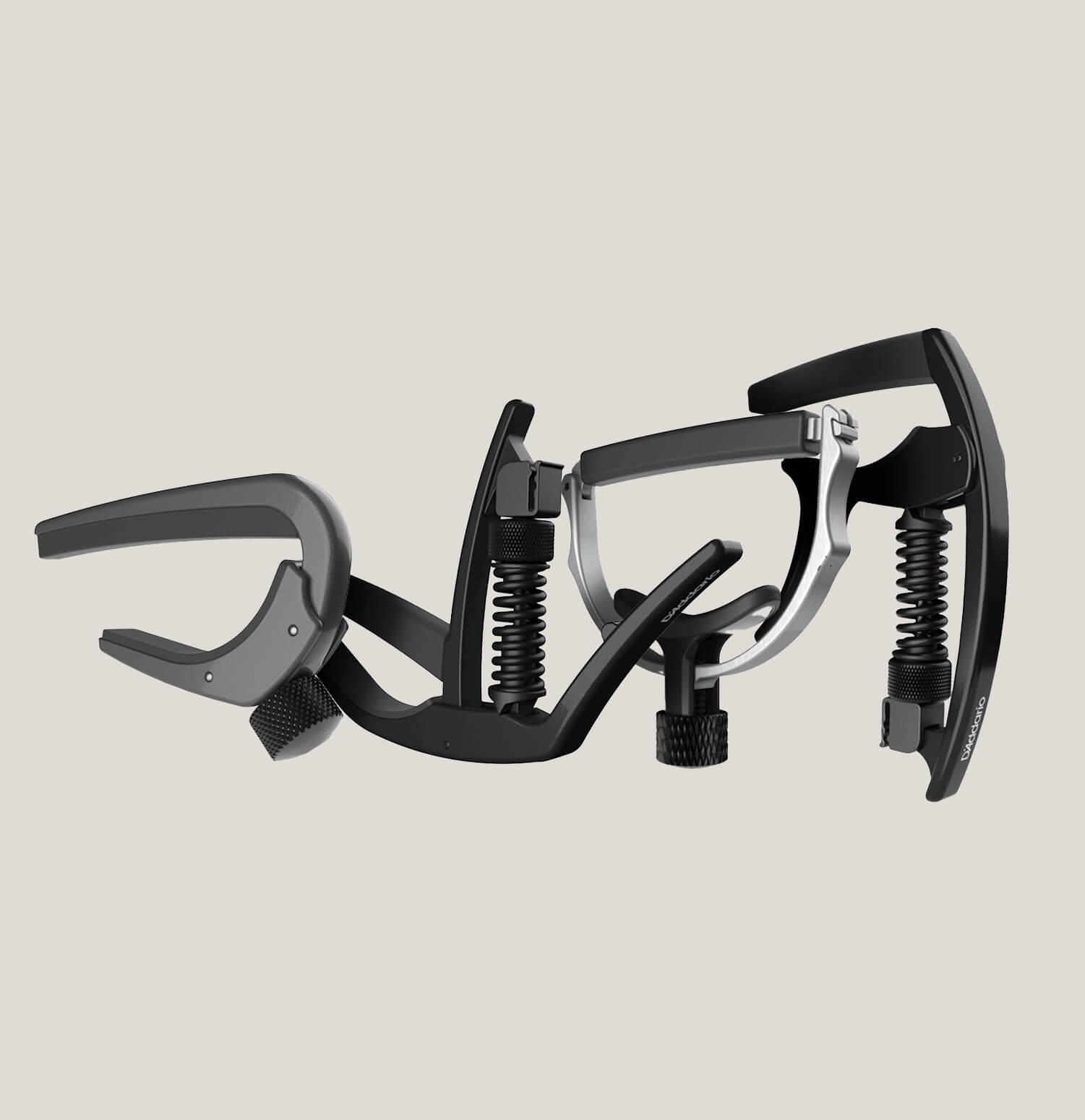What Does a Capo Do for a Guitar?
A capo is an easy way to change the tuning on a guitar, quickly and consistently. It is a trusted tool that dates all the way back to the 1700’s! If you want to be in a new key for a song or two, you can use a capo and use your same chord shapes If you want an easier time hitting low frets while playing high, you can use a capo and just focus on what is comfortable to play. A capo can be used to adjust keys to better suit a vocalist or give a song a new vibe.
The word “capo” comes from the Italian word “capotasto” which refers to what is now known as the nut of the guitar. Since a capo essentially acts as a movable nut, the term makes sense.
Since then, capos have come a long way. You may not have realized, but capos have been used on a number of famous recordings including The Eagles “Hotel California”, “Wonderwall” by Oasis, The Beatles “Here Comes the Sun”, and James Taylor’s “Fire and Rain.”
What is a Capo?
A capo is a small device that clamps onto the neck of a guitar, changing the pitch of the open strings. There are a few different types of capos, but they all function the same way—by clamping onto the guitar’s neck and holding down the strings against the fret.


What Does a Capo Do?
A capo temporarily shortens the strings on your guitar, raising the pitch of the unfretted, or ‘open’ strings and changing the key of open-position chords. Where you clamp the capo determines which open pitches the strings have and what your open-position chords are. By using a capo, you can more easily sing along or play with other musicians without having to change the chord forms you know and love.
What Type of Capo Should I Use?
All capos function pretty much the same—they apply tension to the strings across the fretboard. Given that, one capo can work on most instruments but because of that, the slight differences in capo design are really worth understanding so you can be confident in what is right for you.

Trigger Capos
Triggers capos, like the D’Addario Tri-Action and Artist capos, function using a spring which automatically clamps down on the neck. They’re easy to use, adjustable, and let you change position quickly. The difference between the two D’Addario trigger capo designs is where the handle falls. The Tri-Action handles sits behind the neck, while the handle of an Artist capo points in front of the fretboard. This means one is easier to move with your fretting hand, and one is easier to move with your strumming hand.

Screw Capos
Screw capos feature a small dial to adjust how much tension is on the neck. Less automation means a much lower profile. It may take slightly longer to dial in, but you can achieve the perfect pressure and barely notice it’s there on the neck, in your pocket, or in your gig bag as a just-in-case.
Cradle Capos
Cradle capos are a premium option for players who are particular about their tension. It lives on the neck of your guitar behind the nut so whenever you need it, it is there. Our unique self-centering design applies even, consistent pressure against every string, assuring there is no buzz.




